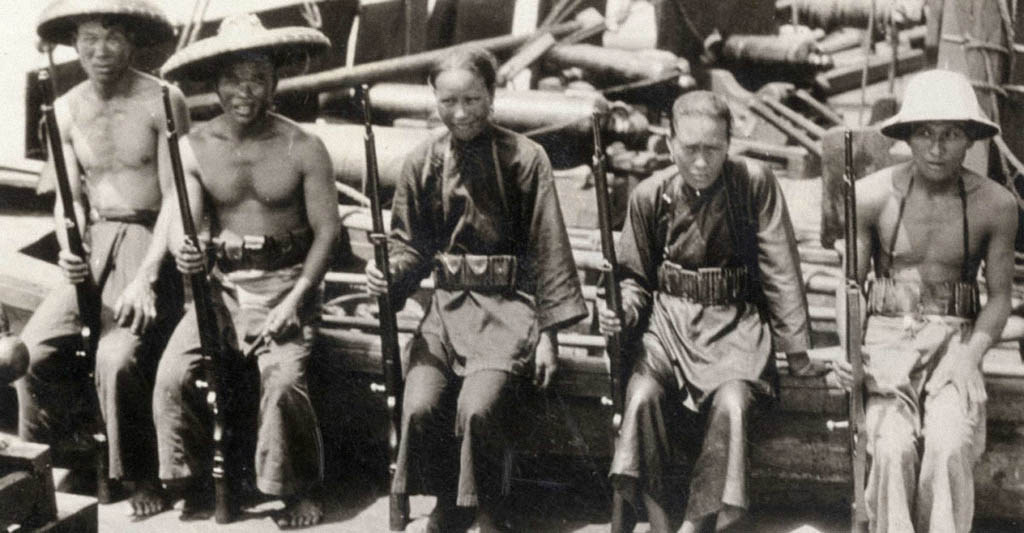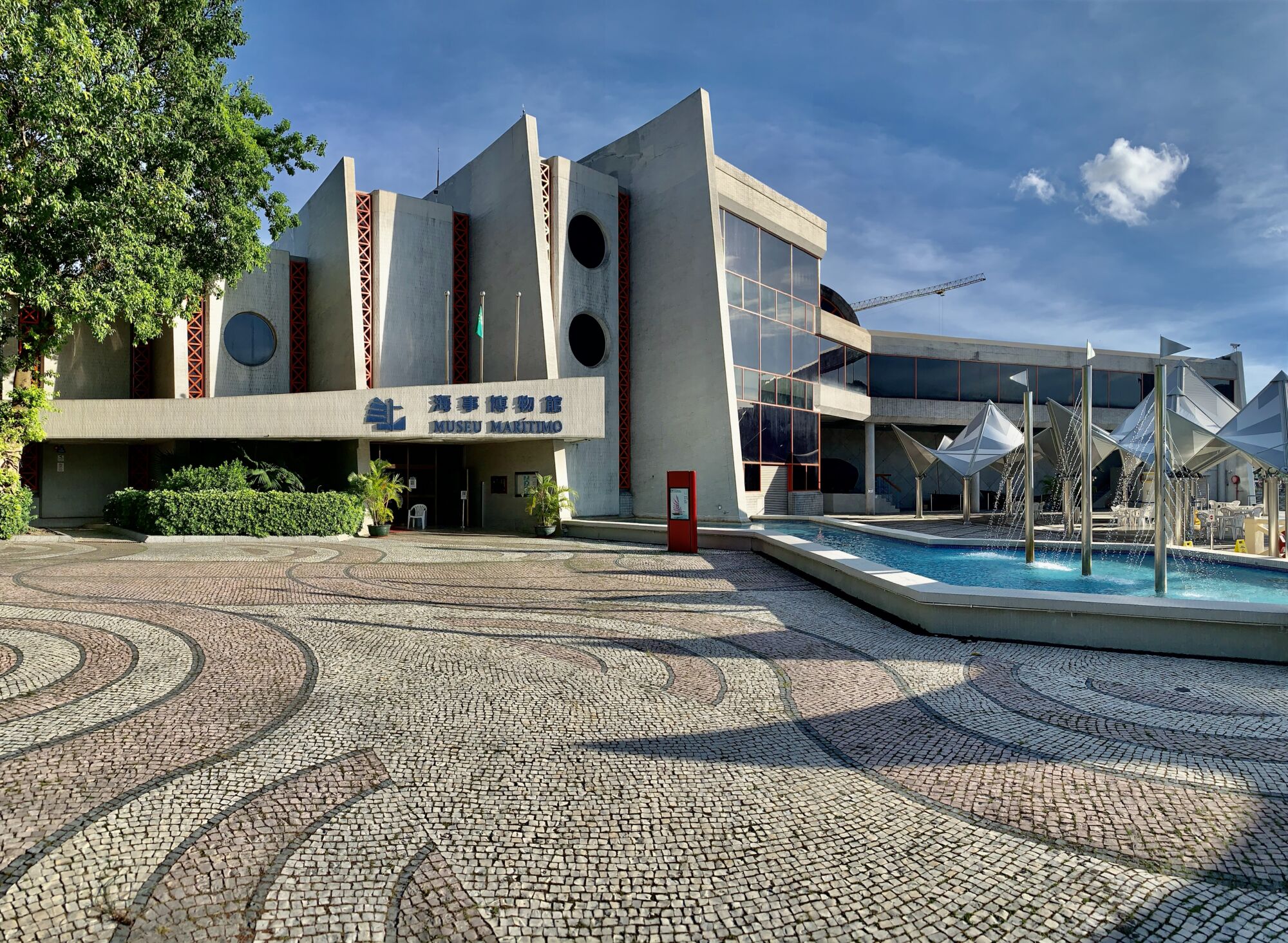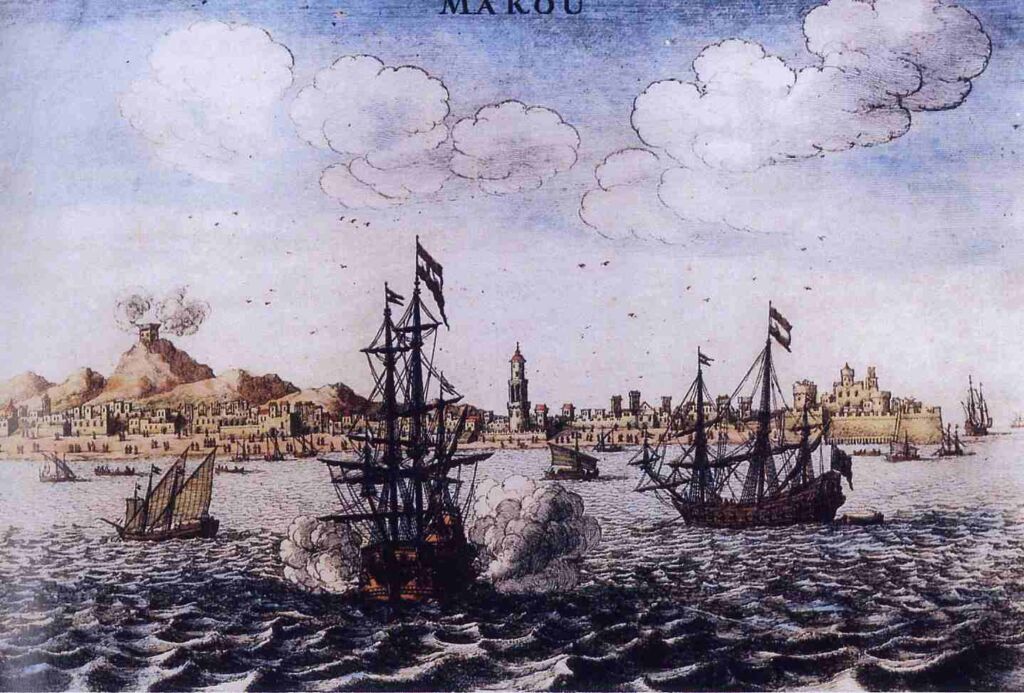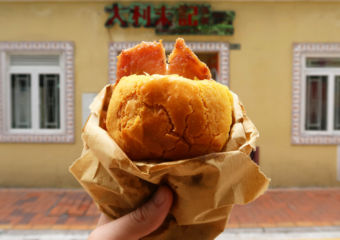Featured image: (Boats in Macau circa 1606-1607) sourced from Wikipedia
Believed to have been reached by Portuguese explorers via sea sometime in 1550, Macau was already inhabited by locals way before the arrival of these ships. Contrary to what one might think, Macau was never considered a colony–at least officially. You might have heard about the importance of the A-Má goddess and temple, and how the city lived mostly on fishing and ship construction. This time, we tell you a bit about the origins of Macau and how its history is intimately related to maritime travels and great explorers. Read on and find out all about it!
Also read: The True Story Behind Macau’s Walls
Settling & Trading
According to archeological findings, it’s believed the Macau peninsula was populated by Chinese people for about 4,000 years, and for around 5,000 years in Coloane–then, an island. Other historic findings affirm several Chinese commerce ships would frequently stop there to refill their water and food supplies. In 1277, several Chinese supporters of the Song Dynasty fled their country and found shelter in Macau, settling there and even building what is believed to be the oldest temple in Macau, Kun Iam Temple–previously located in Mong-Há.
Macau is considered to be the first-ever European trading post in China, responsible for proliferating commercial exchanges between China, Japan, and Europe since China had banned trading with Japan for more than 100 years. Macau’s most prosperous time as a trading post was between the 16th and 17th centuries.
Before the 16th century, Macau was called Hou Keng or Keng Hoi in Cantonese–meaning “oyster mirror” or “sea of mirror”. You might not recognize these names but will probably know the Cantonese Ou Mun, which literally means “the bay’s door”. It was named so due to the fact it was mainly inhabited by settlements of fisherman and peasants from the Chinese provinces of Fujian and Guangdong. They were the ones who purportedly built A-Má Temple. As for the name “Macau”, history books attribute it to the disembarkment of the Portuguese navigators, who got out at A-Má’s bay (A-Ma Kong), later turning into A-Má Gao, Amacao, and finally, Macau.
Also read: A-Ma Temple: Where it All Began
Macau: A Tale of Two Countries
Through the years, numerous powerful countries and governments attempted to take over foreign areas and some of them got lucky. Successful ones include Great Britain–which created the Commonwealth–and the US, while others succumbed to extinction, like Napoleonic France or the Romans, way back in time. Although the Portuguese empire was quite extensive–all the way to African countries such as Mozambique, Cape Verde, and Angola, or Goa in India – Macau was never officially considered a Portuguese colony. Believed to have arrived by sea to where is now A-Má Temple and the Maritime Museum, the Portuguese slowly started establishing themselves in the city.
However, none of this would be possible if it wasn’t for the Portuguese navigator Vasco da Gama’s courage and persistence. Determined to explore the rest of the world, he commanded the fleet responsible for the first-ever maritime route from Europa (Portugal) all the way to India across the Atlantic Ocean (1497–1498). Once in Asia, getting to know the rest couldn’t be that difficult. Interestingly enough, Portugal’s first contact with Chinese territory wasn’t through Macau, but with an island by the coast of Zhuhai. The discovery was made by explorer Jorge Álvares. This was followed by the illegal erection of small wood shacks by Portuguese traders there to do business. These constructions were demolished once the traders left. At the time, the Portuguese were only allowed the “visitor’s” status.
After a series of failed attempts to settle at nearby villages and areas, Macau was one of the only places where people were still willing to trade and work with the Portuguese. The latter first arrived in the city in the mid-16th century alleging the need to dry their shipments. According to Swedish researcher and merchant, Anders Ljungstedt, the Portuguese got permission to settle in Macau not by officially asking the Chinese emperor, but by gaining the locals’ trust and treating them with goods the land couldn’t provide.
Sovereignty treaties
The presence of a European power such as Portugal brought quite an amount of prosperity to the city itself, mainly from business made by sea, with Macau as a point of entry and exit for China and the rest of the world. Import and export were fruitful, as the Chinese sold their goods to the world and also bought some from abroad, including Europe and other places that were closer, like silk and other goods from India. However, after some incidents, China forbade trading with the Portuguese until they gave Malacca back to its previous sultan. Having refused so, they then started doing contraband. On August 13, 1862, Portuguese governor Isidoro Francisco Guimarães signed the Tianjin Treaty with China, although this is considered an unequal treaty in the sense that it only benefited the European country. The Portuguese argued that the document stated Macau was part of Portugal and that China was obliged to allow them to use Macau and other ports for trading and commerce. The Chinese government disagreed and there were several discussions regarding this matter, leading to the annulment of the document.
It wasn’t until December 1, 1887, that the two countries signed the Sino-Portuguese Friendship and Trading Treaty, thus affirming Portugal’s governing over territory which remained a part of China. Some say this was only possible after the weakening of the Asian country after losing the Opium War.
Also read: The Impact of the Opium War on Macau
Macau’s combination of cultures was always very visible. There are Catholic churches close to Chinese temples, people speaking Cantonese, English, and Portuguese through the streets, which were also given names with Chinese characters and Portuguese words. The sea was also through where the first European–mainly Spanish and Portuguese–first entered Macau. A powerful force during past centuries–from the 16th till the 18th–the Jesuits intended to spread their religion throughout the world, establishing hundreds of churches in mainland China, the Philipines, India, and some other Asian countries. Macau was one of the first places the Jesuits landed, at the start of the 1520s. In 1553, nobleman Leonel de Sousa–received authorization from China for the Portuguese to start putting down some roots in both Macau and Guangdong areas.
With the 1-2-3 incident (in December 1966) and recognizing a profound clash between the Portuguese and local populations living in the city, both governments decided that the sovereignty of Portugal over Macau would end in December 1999, to which an adjustment period would follow.

Source: Raquel Diaz
Saved by the pirates
Curiously, other sources argue one of the main reasons for China lending Macau to Portugal was to thank the latter, who helped to get rid of ferocious pirates attacking the Pearl River Delta, the China Sea, and neighboring coastal cities. Piracy is just one more way in which Macau’s history is related to the sea. Unfortunately, the city wasn’t only a prosperous trading port and area, it was also a great point of entry for criminals. These attacks were particularly frequent between 1557 and 1564. The pirates would ransack entire villages for food, furniture, and other goods such as edibles (rice, grains, and more), but also assault, kidnap, and rape the people living in these places.
However, these attacks didn’t stop there. There were some others from time to time. There are numerous tales of pirate attacks, and even a monument in Coloane village–in front of the Chapel of St. Francis Xavier–dedicated to the glorious defeat of the Portuguese police against a fleet of Chinese pirates, in the summer of 1910.
Also read: The Not-So Swashbuckling Pirates of Coloane
Dutch Invasion: The fault in the letters
Macau had so many fortresses over time that it would be easy to assume the city fought several battles. Perhaps they were built to protect one of the most lucrative coastal cities in Asia from pirates or other foreign forces. However, the number of fights and battles happening in Macau is very little. Besides the off and on pirates attacks and some local uprisings during the 20th century, there’s only one other battle worth mentioning and that is the Dutch Invasion, in 1622. This too is directly related to the sea, the channel they used to enter the territory.
How did it start, you might wonder. With letters, no less. Portugal’s extended empire across Asia was a source of envy by other European powers, including the Dutch, who tried raiding Macau consecutive times at the start of the 16th century. In 1580, King Philip II of Spain was crowned the leader of Portugal, and the Spanish had the Philippines under their control at the time. Spain was one of the Netherlands’ sword enemies, which made Macau a much-desired trophy.
The Dutch troops had no idea of how much military power and defense the city had, which weakened their position when planning an attack. This situation shifted when a Gallias ship–from the Netherlands–seized a Portuguese one carrying letters, later revealed to be a powerful tool: they contained information on the lack of resistance from Macau regarding possible attacks. Commanded by Cornelis Reijersen, the fleet was made of 13 ships carrying around 1,300 men. Battle techniques aside, what matters is that Macau’s population and military forces–plus the fortresses built to keep enemies away–were enough to make the Dutch withdraw their troops.

Macao Maritime Museum: Travelling Through Time
If you want to know more about how maritime routes and the sea are connected to Macau’s history, the Macao Maritime Museum is the place to go. Filled with interactive exhibitions and a series of explanations and useful information about Macau’s earliest years and populations, the Silk Route, the discovery of Macau by the Portuguese, main materials and products traded, and more. The museum’s mezzanine floor features replicas of 14 traditional Portuguese boats and ships with info on their origins and roles, including Portuguese army ships Sagres and Crioula.
This exhibition gallery includes narratives about the main economic sources of the city, including fishing and shipyards construction. There’s also information on Macau’s climate and typhoons, a frequent phenomenon in the city and surrounding areas. This is a must-visit spot when on the lookout for an informative, cool, and beautiful museum filled with history, artifacts, and interactive exhibitions. It’s ideal to visit with the whole family, kids will love it for sure!
Also read: Off the Beaten Path: Exploring Barra
Also read: 5 Original Museums in Macau
Also read: 5 Museums in Macau the Whole Family Can Enjoy
Opening hours: Wednesday–Monday, 10:00am–6:00pm
Macao Maritime Museum 1 Largo do Pagode da Barra, Macau, +853 2859 5481, www.marine.gov.mo



































